If you’ve never seen Mexican wedding traditions in person, you’re missing out on some of the most elaborate and detailed festivities you’ve ever seen. As Charlotte wedding photographers, we’ve been lucky enough to be a part of traditions from all over the world. But Mexican traditions are some of the most intense we’ve experienced, with receptions that can spread for over two days and a ceremony of just about one hour.
Beautiful, elegant and often filled with religious connotations (but not always), the following traditions are some of the most memorable that we’ve experienced.
9 Must-Experience Mexican Wedding Traditions
1. Mass and Church Ceremony
Mexican weddings are often highly religious events. Mass and church ceremonies are common and:
- Take place on Sunday
- Occur in addition to mass
Mass ceremonies are an extension of mass and allow vows to be exchanged along with a blessing.
Church ceremonies may or may not be in Spanish, and the event heavily involves the couple’s parents. Parents are honored during the event and will walk them down the aisle as a symbol of consent.
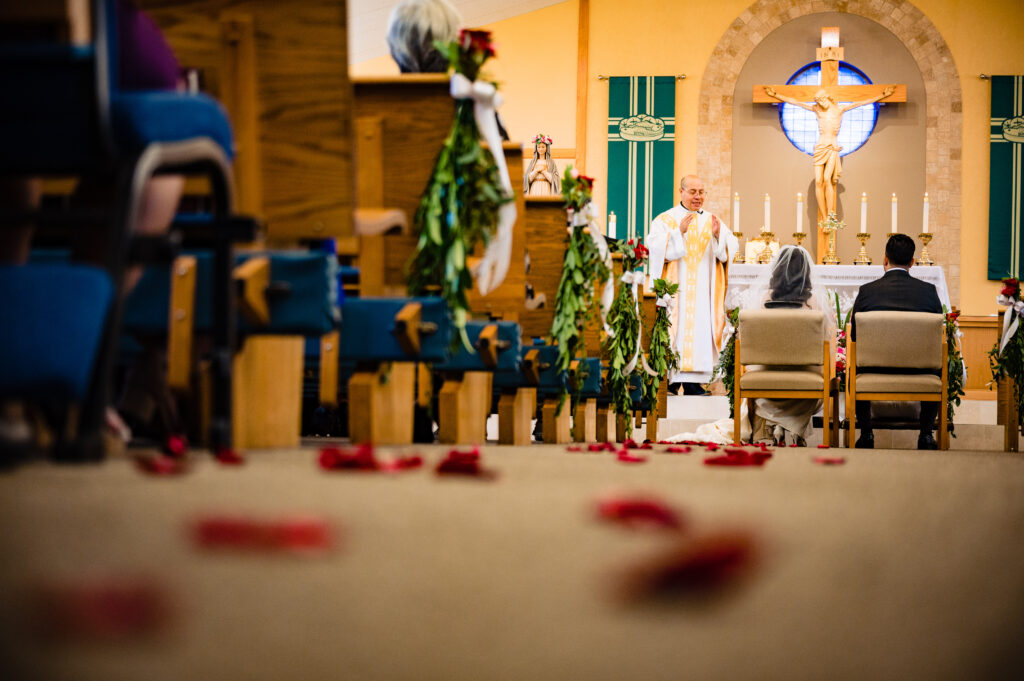
2. Los Padrinos y Madrinas
Los Padrinos y Madrinas are the wedding’s sponsors or godparents. Padrinos and madrinas are financially involved in the wedding and will often pay for:
- The engagement party
- Ceremony-related items
Steeped heavily in traditions and customs, padrinos and madrinas are very close to the couple and may have watched them grow up. Couples can have multiple groups of people, often married to each other, be padrinos and madrinas.
A few of the traditions that these important people help with are:
- El lazo – a biblical representation of new beginnings in the Bible.
- Las Arras Matrimoniales – a ceremony that shows shared responsibilities of the couple
- Much more.
3. Kneeling Pillows as Gifts
Have you ever seen kneeling pillows be given as a wedding gift? We have. Often, the padrinos and madrinas will cover the expense of the kneeling pillows used to kneel and pray throughout the mass.
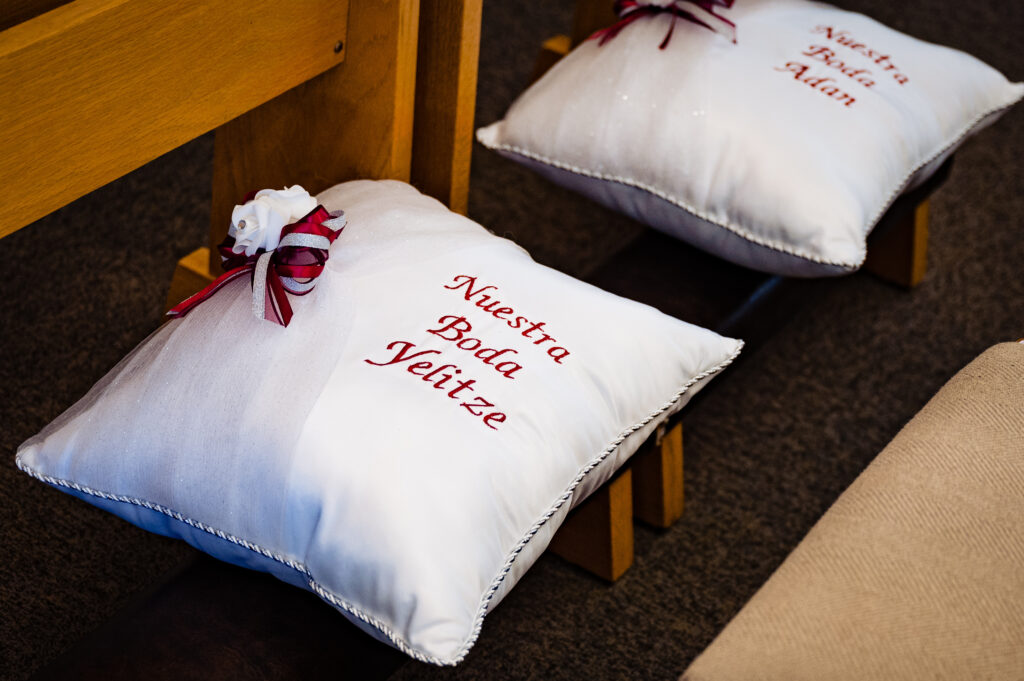
Kneeling pillows are ornate and white with lace. Often, they are kept as mementos of the big day.
4. Marriage Coins, or Las Arras Matrimoniales
One of our favorite Mexican wedding traditions is the exchange of marriage coins. An old tradition dating back at least a few hundred years, the padrinos and madrinas will give the couple a gold box filled with 13 gold coins.
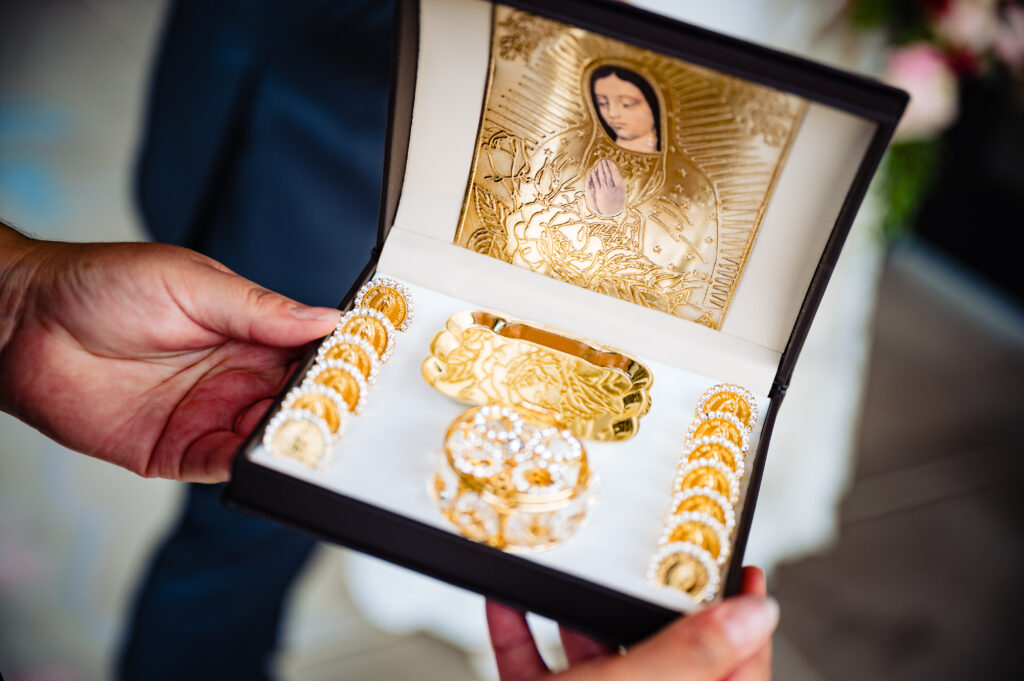
What do the coins symbolize?
Each coin represents one of the 12 apostles, and what about the last remaining coin? The final coin represents Jesus and the idea is that the coins will remind the couple to reassure each other.
5. Mariachi Band
One similarity between religious and non-religious Mexican wedding traditions includes the addition of a mariachi band. The band will often sing:
- Religious songs
- Hymns
Depending on the couple’s wishes, the band may be with them throughout the day and night, offering festive live music that will fill the dancefloor with guests of all ages.

Speaking of dances, if you’re invited to a Mexican wedding, you’ll see elaborate choreographies on display.
6. Special Dances
Dancing is the heart and soul of every Mexican wedding reception. Couples typically kick off the party with their first dance, but throughout the evening, other Mexican wedding dance traditions will bring the party to life, including:
- La Vibora de la Mar (Sea Snake Dance). The bride and groom stand on opposite chairs and hold hands to form an arch. Friends and loved ones pass through the arch while dancing and holding hands. Things start to heat up as the music speeds up and the happy couple finds it harder and harder to keep it together. It’s a fun tradition that brings the entire party together.
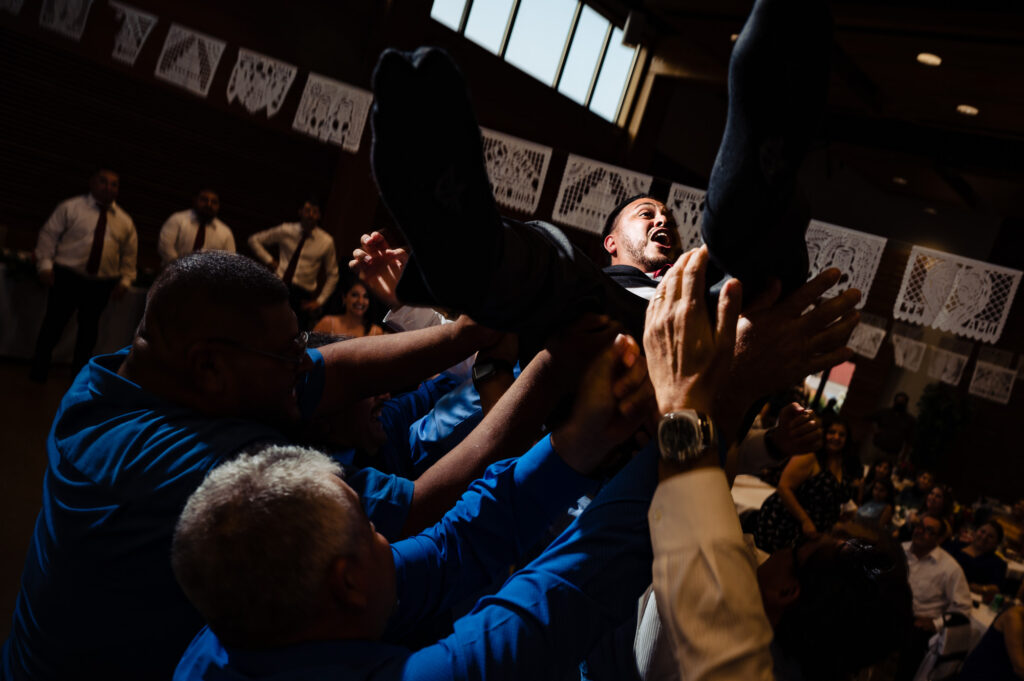
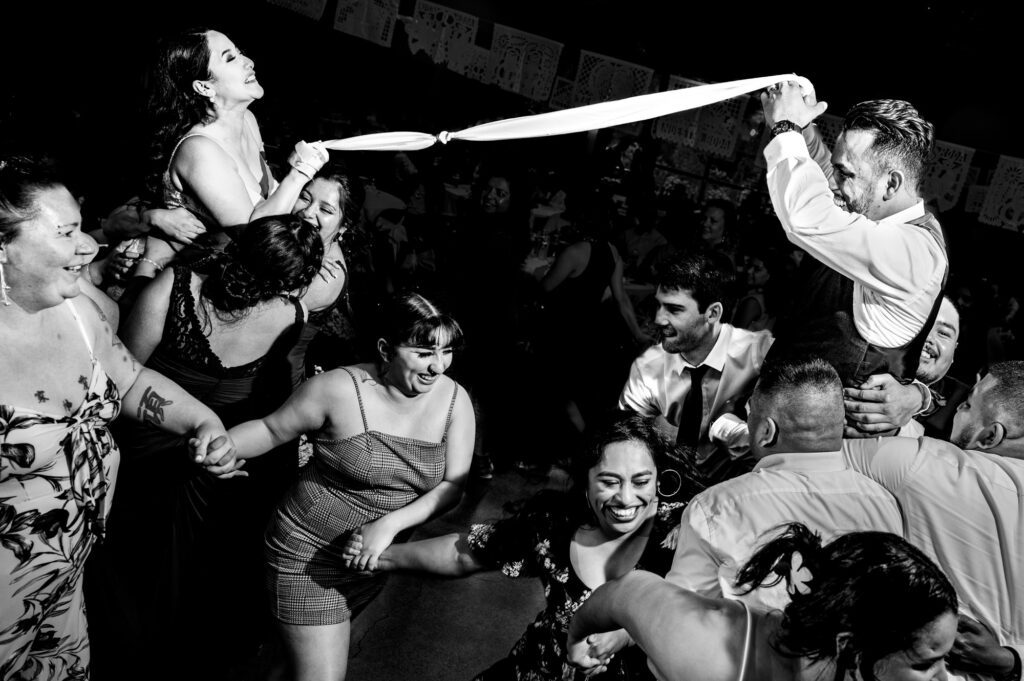
- The Dollar Dance, or the “money dance.” Although its origins are unknown, the money dance is common at Mexican weddings. Guests pay the bride or groom for a dance by pinning dollars to their clothes.
All of that partying and dancing is sure to tire you out, but the party doesn’t stop at the reception!
7. Tornaboda
What do you do after the wedding reception? If you’re part of the couple’s inner circle, you may head out to the afterparty or tornaboda.
The tornaboda is a festive celebration on a more intimate scale, and it sometimes takes place the day after the wedding.
The tradition started in Mexican communities where weddings were open invitations for anyone and everyone to come and celebrate. Couples may have had hundreds of people attending their reception – and they may not necessarily have known them all. So, the tornaboda became a way for the bride and groom to celebrate with their closest friends and relatives after the big party was over.
8. La Hora Loca
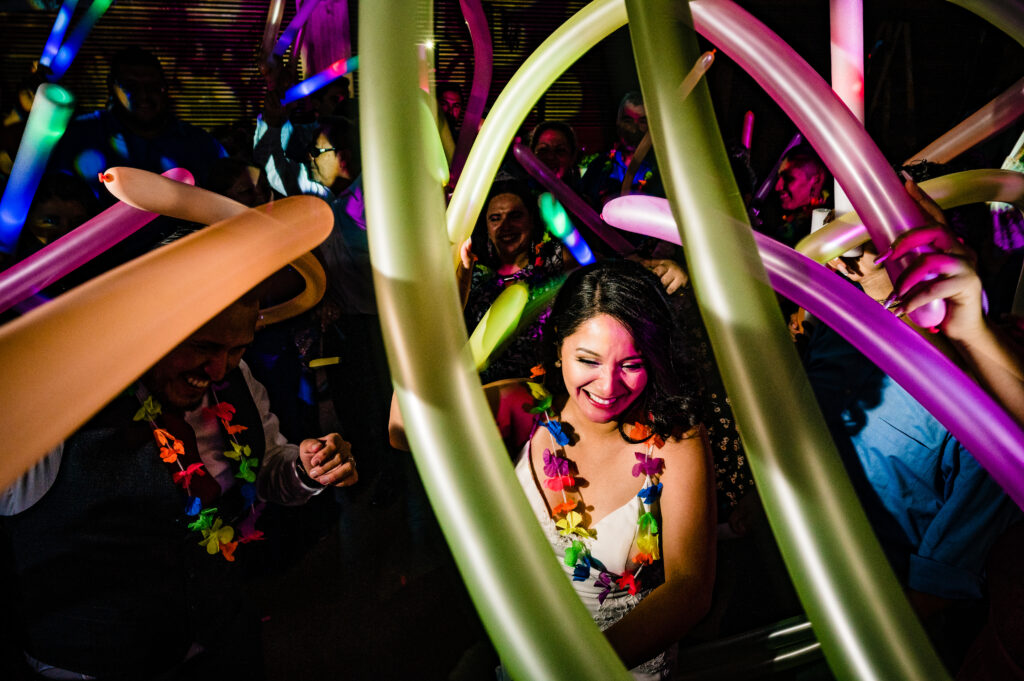
If you can’t wait for the tornaboda, some Mexican weddings include an event called La Hora Loca, or “The Crazy Hour”. Just when you think that the party is getting started, the music turns up and ANYTHING can happen. Masks, costumes, props, bubbles, streamers, or performers can all show up at any given time. The Hora Loca can be a fun surprise for your guests that they might not always know about – we’ve seen it introduced abruptly with a siren or subtly by the dimming of the lights. Whatever way it’s started, it’s an amazingly fun tradition adopted by Mexican weddings (as well as quinceaneras!).
9. The Dress
Mexican wedding dress traditions date back centuries. Imbued with Spanish and indigenous influences, the wedding dress is so much more than just a garment at a Mexican wedding. It’s the embodiment of cultural heritage and steeply rooted in tradition.
As photographers, we’ve had the honor and pleasure of capturing the traditional Mexican wedding dress in all its glory, which typically features:
- Vibrant colors. Although white has become increasingly more popular in modern times, traditional Mexican wedding dresses feature bold and vibrant hues of blue, red and yellow.
- Embellishments, embroidery and lacework. The intricate designs of Mexican wedding dresses are show-stopping. Every inch is adorned to create stunning motifs and patterns inspired by cultural folklore, myths and nature.
- Symbolism. Virtually every aspect of the dress’s design is symbolic, from the lace that represents purity to the bold embroidery that symbolizes prosperity. Every detail has meaning and purpose.
Mexico is a melting pot of cultures and traditions, so each region will have its own style. In the Yucatan Peninsula, for example, brides may wear a traditional Mayan garment known as a huipil, which is adorned with stunningly detailed embroidery. In Jalisco, brides may wear a charro dress, which is inspired by Mexican cowboy attire.
Final Thoughts on Traditions to Include for a Mexican Wedding
These Mexican wedding traditions create a unique and unforgettable experience for guests who have never attended a Mexican wedding. From the marriage coins to the traditional music, dances and food, you’ll find that Mexican weddings are a feast for all of the senses.
Party of Two Photography is a husband and wife team of Charlotte Wedding Photographers who value a fun, easy experience that creates genuine, vibrant, and creative imagery.
We want to book!
we want to see more photos!
Party of Two Photography
Charlotte, North Carolina